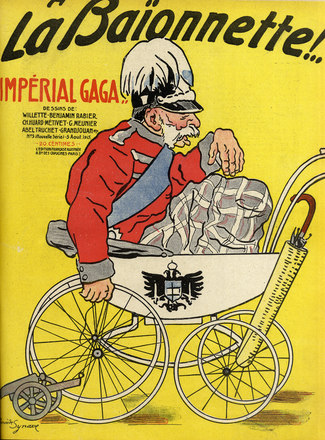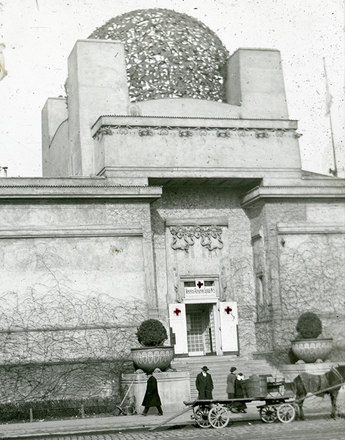Forms of Masculinity – Hierarchies, Rivals, Competitors
In the First World War the unique multinational concept underlying the Habsburg Monarchy’s army, according to which the different ethnicities were committed to the emperor and the idea of a common ‘fatherland’, led to different forms of military masculinity determined by region, faith and social background.
These multiple versions of masculinity are summed up by a Hungarian officer in Franz Theodor Csokor’s drama 3.November 1918 (1936): ‘Colonel – you, sir, are an old cavalryman – we are not all from just one stable like those Germans over there.’ The drama depicts a group of officers who experience the end of the war at a remote location. Radosin, the longest serving officer, is the only one of them who clings to the supranational idea of the dying empire, while among the officers signs of the dividing lines of national, ethnic and political conflicts can be seen. Radosin comes to the only possible conclusion and commits suicide, the last, now homeless, representative of empire, emperor and army.
That the Austrian officers come from different national backgrounds and do not get along without friction and conflict is also clear from Rudolf Jeremias Kreutz’s novel Die grosse Phrase (The Great Phrase) (1919), which presents various forms of rivalry and competition. Some put their money on ‘German strength, German toughness’, while others do not lose their faith in the Slavic and feminine qualities of the Austrians. The arrival of the German troops illustrates the difference between the German and Austrian forms of military masculinity: ‘The face of the landscape becomes steely, no longer with the soft melancholy of death, no blurring … .’ In Bodo Kaltenboeck’s Armee im Schatten (Army in the Shadow) (1932) the Germans are shown as ‘disciplined’ and the Austrians as ‘sloppy’, with special emphasis being placed on the ability of the Austrian officers to move between battlefield and café without any problems: ‘That is why we are also appear in operettas in our theatres. Always elegant, always courteous, always lovable, always dancing the waltz.’
In Alexander Lernet-Holenia’s novel Die Standarte (The Standard) (1934) the temporary nature of the Austro-Hungarian soldiers is particularly emphasized (‘They remain, even in uniform, still the peasants that they are.’) and Austrian military discipline is characterized as ‘acquired’. The Austrian war hero, who has been shaped by different national cultures, oscillates between ‘German’ efficiency and discipline and ‘Austrian’ qualities of being easy-going and sensitive. Both ethnic differences and the influence of the German culture ‘of steel’, which represents a completely contrasting image to the lightness and operetta-like nature of the Austrians, lead to tensions and inequalities in relations between the two sides.
The different elements that are included in or excluded from this highly diverse military space are made visible. The German-Austrian officers – loyal, tough and masculine, daring men – appear, at least in the hero-glorifying literature, as privileged and are meant to set standards for heroism. In contrast to the non-German other ranks with their male types that deviate from these norms (cowards, madmen, deserters, civilians), these men are characterized by loyalty to the emperor and the fulfilment of their military mission – their military disposition shows no signs of breaking down.
Translation: Leigh Bailey
Früh, Eckart: Rudolf Jeremias Kreutz und seine Romane aus der Kriegszeit, in: Amann, Klaus/Lengauer, Hubert (Hrsg.): Österreich und der Große Krieg 1914-1918. Die andere Seite der Geschichte, Wien 1989, 164-170
Rieger, Markus: Zauber der Montur. Zum Symbolgehalt der Uniform in der österreichischen Literatur der Zwischenkriegszeit, Wien 2009
-
Chapters
- Dreamers Who Turn into Heroes
- ‘Warriors on the Frozen Front’ – The War in the Alps as a Test of Manly Strengths
- The War as a ‘Technoromantic Adventure’
- Forms of Masculinity – Hierarchies, Rivals, Competitors
- Melancholy Men in Uniform – How Masculinity Becomes a Problem
- ‘Black Decay’ – Soldiers as Victims
- ‘The Flight Without End’? – The Warrior’s Homecoming
- ‘A New Race of Men’? – Ideologies of Masculinity in Post-War Austria







